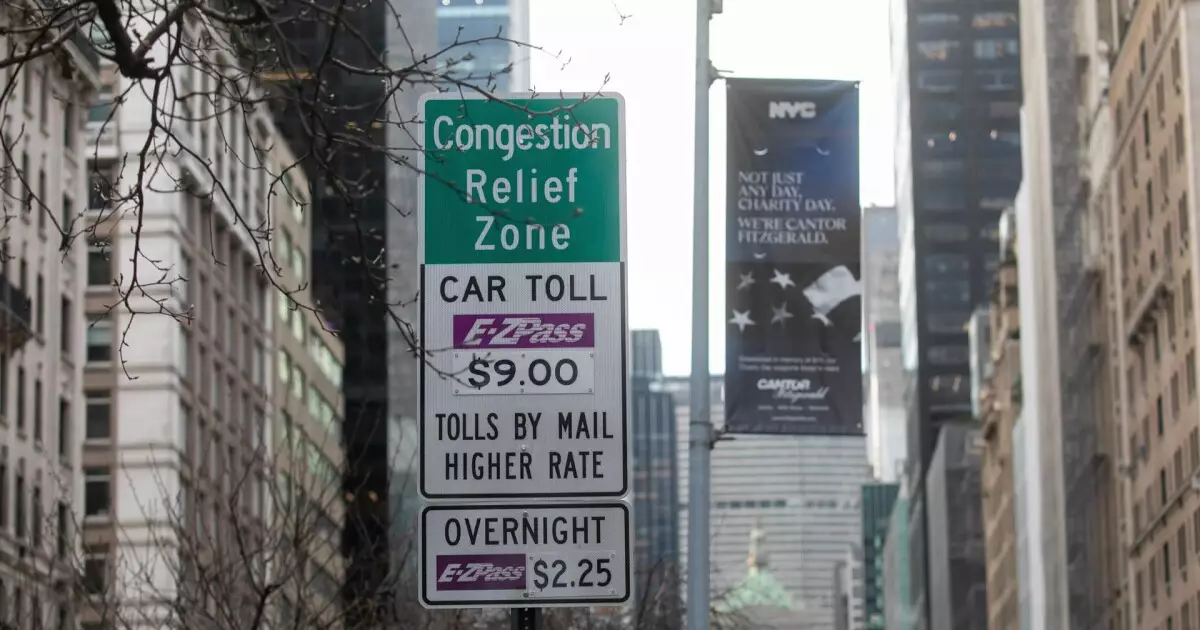In a bold maneuver, the Trump administration’s recent termination of federal approval for New York City’s congestion pricing program has sparked intense debate and controversy. Initially launched in January, this initiative—a brainchild stemming from former Mayor Michael Bloomberg’s 2007 proposal—aimed to alleviate traffic congestion by imposing a toll on vehicles entering Manhattan below 60th Street. While designed to improve urban mobility and fund mass transit enhancements, the abrupt decision to halt this program highlights the complexities involved in urban policy and federal oversight.
The Metropolitan Transportation Authority (MTA) wasted no time responding to the abrupt termination. Quick to act, they filed a lawsuit challenging the decision, emphasizing the overall success and necessity of the congestion pricing program. MTA Chair Janno Lieber articulated a strong defense for the program, insisting it has led to measurable improvements in congestion and optimized travel times for commuters. This highlights a critical aspect of urban governance—the delicate balance between federal directives and local initiatives aimed at addressing pressing local needs.
Transportation Secretary Sean Duffy articulated the administration’s rationale, presenting a scathing critique of the congestion pricing model. According to Duffy, the program was detrimental to working-class Americans and small business owners, effectively establishing an additional financial barrier for those who rely on automobiles. His argument was rooted in the assertion that many drivers had already contributed to infrastructure through fuel taxes, and thus, creating a toll without an alternative route was inappropriate. This perspective raises fundamental questions about equity in transportation funding—specifically, who bears the brunt of urban policies designed to promote sustainability and public transit?
Moreover, Duffy pointedly argued that the program diverted resources from highway maintenance to mass transit funding. His remarks generated discussions about the functionality and aim of such programs, highlighting a perceived misalignment of the congestion pricing system with those foundational goals. The federal position, rooted in ensuring that tolls are justified by direct congestion reduction, reflects ongoing tensions between state and federal strategies in urban planning.
The termination of the congestion pricing program facility also amplifies the political dynamics influencing urban policies. Governor Kathy Hochul’s initially hesitant support for the program—having previously suspended it over cost concerns—illustrates the fraught landscape of local governance in a heavily politicized context. The push for the program’s implementation prior to the transition of presidential administrations embodied a race against time, underscoring the difficulties of enacting progressive urban policies under shifting political winds.
As legal battles unfold, the ramifications will stretch beyond the MTA and its plans for congestion revenue. The prevailing sentiments among New Yorkers regarding their public transit system, traffic congestion, and the realities of urban life will inevitably be tested in court, reshaping the future of how cities envision sustainable transport solutions.
New York City’s congestion pricing model, as the first of its kind in the United States, serves not only as an innovative attempt at managing urban traffic but also as a case study for other metropolitan areas grappling with similar challenges. The program was envisioned to fund a considerable $15 billion in infrastructure projects vital to the MTA’s evolution. However, the sudden federal intervention raises questions about the future sustainability of such groundbreaking initiatives.
As the MTA prepares to navigate the complex legal framework while advocating for its constituents, the ongoing dialogue around congestion pricing will likely come to define urban policy discourse in America. Similar models of revenue generation for transit systems will have to account for both practical transportation needs and the ethical implications of funding mechanisms in an increasingly complex urban environment.
The confrontation between the Trump administration and New York City over the congestion pricing program exemplifies the multifaceted challenges of urban policy-making. As cities continue to innovate in the face of growing urbanization, understanding the critical intersections of federal oversight, local governance, and the demands of constituents will be crucial. The litigation driven by the MTA symbolizes a pivotal moment, where the course of a transformational urban initiative will hinge on interpretations of equity in transportation and just governance. As debates intensify and legal proceedings advance, the outcomes will reverberate across the nation, influencing how cities approach the intertwined issues of traffic management, urban funding, and sustainable community planning.


Leave a Reply